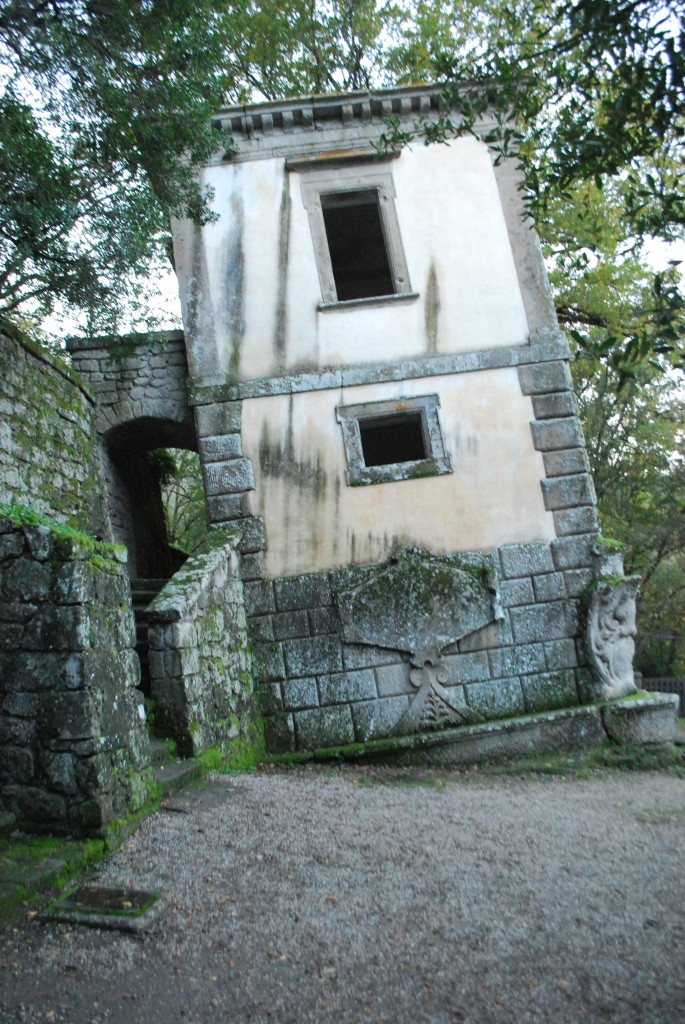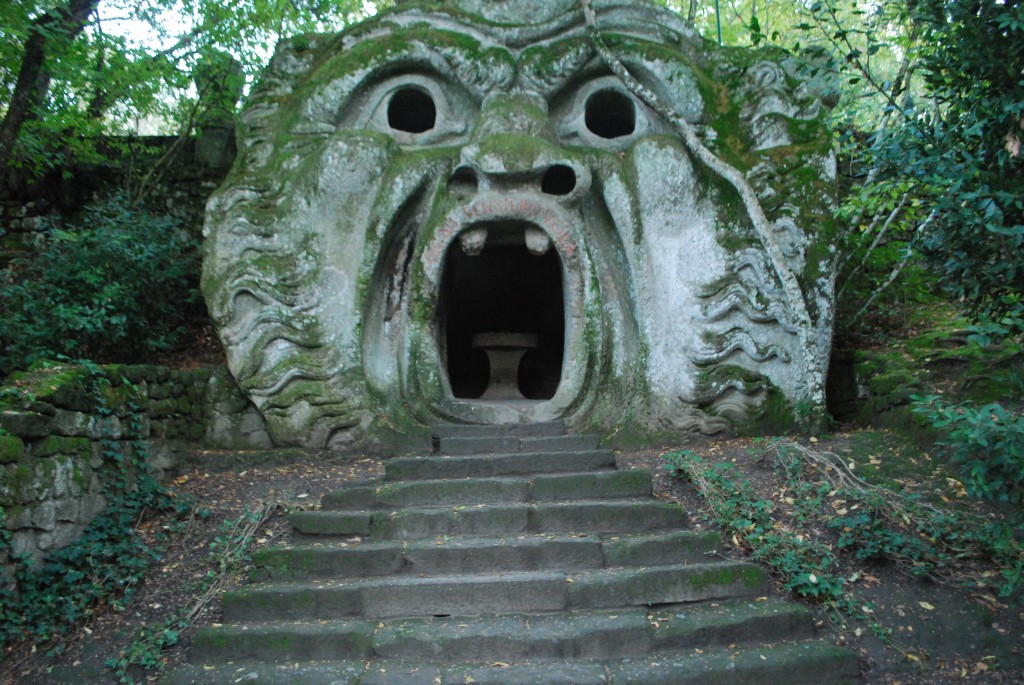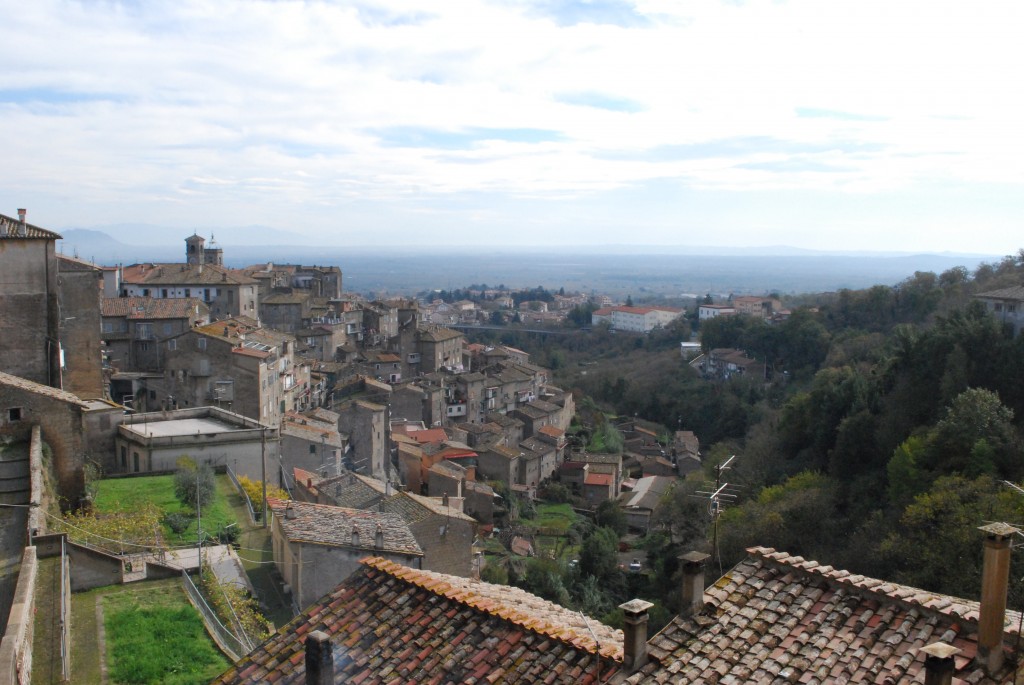
For our last trip as a class, we took a day to visit some of the more prominent villas around Rome. This took us a couple hours north of rome into Central Lazio with small hilly towns such as Orvieto and Caprarola dotting the landscape. Our first stop was Caprarola, which is a tiny town anchored by the massive Villa Farnese. This is one of the grandest villas in Lazio and was the main residence of the Farnese family and all of their holdings (including Caprarola). It is probably best known for its central circular court and the beautiful condition of the interior wall paintings. The villa is a pentagon in form and is flanked by two formal gardens on its rear – a summer and winter garden – which lead to a large landscape and up the to the minor villa on the estate. This is a smaller scale villa, much more modest, but with fantastic water spectacles and sculptures. It was constructed so that the Farnese family would have a “smaller, cozier” house to retire to when the grandeur of the main villa became too much (like the fake French farm on the Versailles estate). What is most amazing about the Farnese Villa is its state of upkeep; almost every room seems as though it was been perfectly manicured since the days when they were actually used.
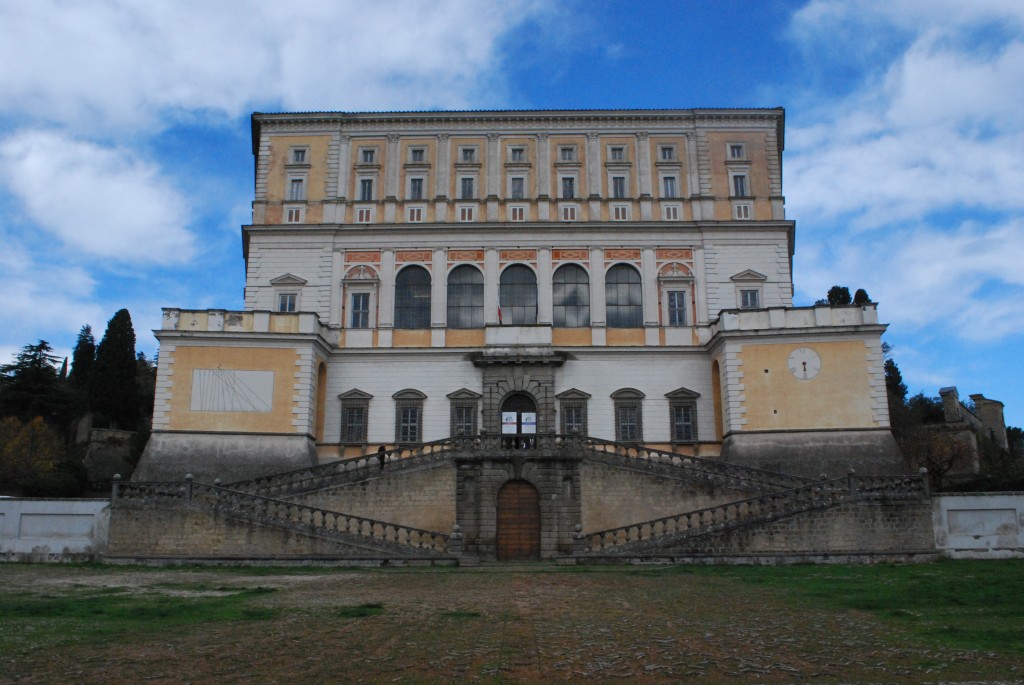
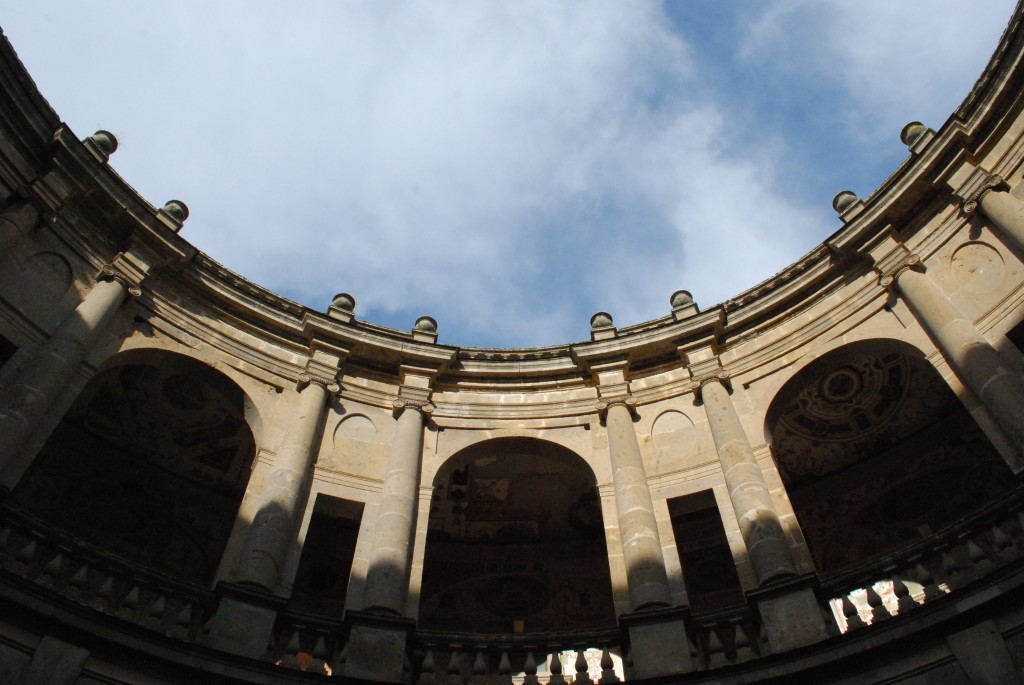
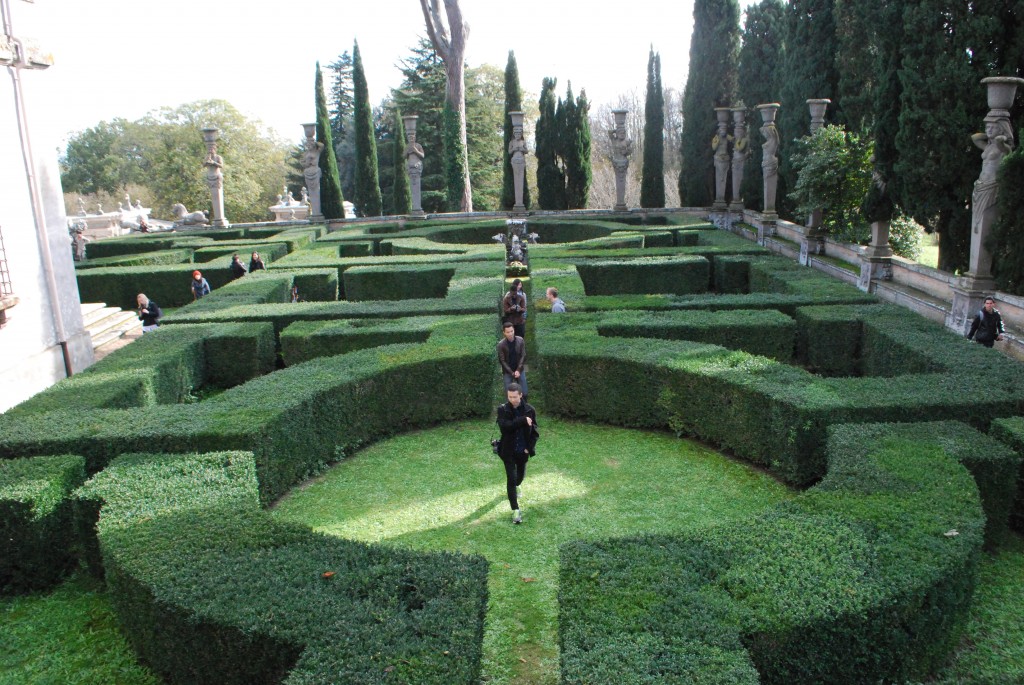
After the Farnese Villa in Caprarola, we headed to the Villa Lante, which is most known for its beautiful stepped garden and fountain constructions. It was built by a bishop as a garden of contemplation, but when the higher ups in the church saw where their funding was going, they cut off the bishop completely. The garden is organized around a main water axis on its center, which cascades water in several different ways down the hillside. My favorite part of it was the dining table, which was about 10 meters long and flowed water down the central spine so that the diners could float food and drink to each other with ease. Ingenious use of water is a continued theme at this estate. Fountains and cascades are intermingled with staircases and plantings; you actually never know when you might surprisingly encounter water as you walk through the gardens. The highest point and end of the garden circuit is a fake natural waterfall covered in moss and plants – a grotto of sorts that looks like it has been there forever. Another common theme in these gardens was to create faux natural water spectacles and landscapes – to make the occupant believe these were not merely designed but naturally created. The informal gardens and parks to the side of the villa include follies and fountains all connected through vast water systems. Exploring the back of the estate was very interesting, as you never knew what you might next come across as you walked through the seemingly natural landscape.
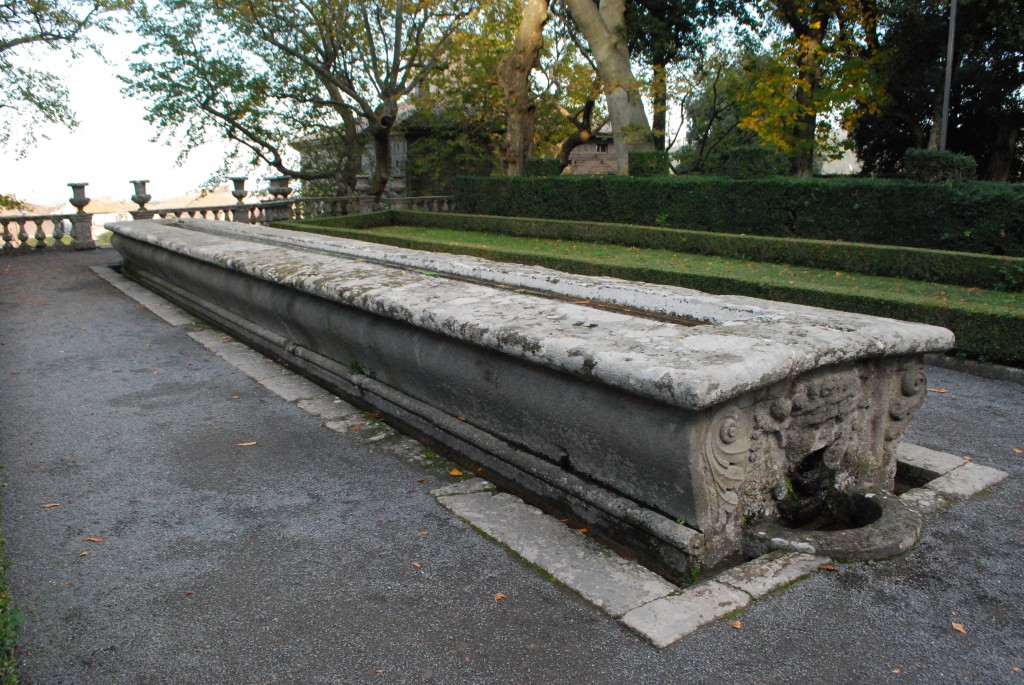
Our last spot for the day was the Monster Park. This is a park that was created as a landscape of oddities and wonders with large sculptures, water features and bizarre architecture. There is a house constructed at a slant, that one can explore, as well as giant animals and monster faces that you can enter and play around on. The garden is sited on the deep ravine of a river, so one must wander up and down steep hills and staircases to see all of the sculptures the park has to offer. We were only at this park for a brief time, but the strange sights and huge sculptures were definitely still as extraordinary as the beautiful villas we began the day with.
